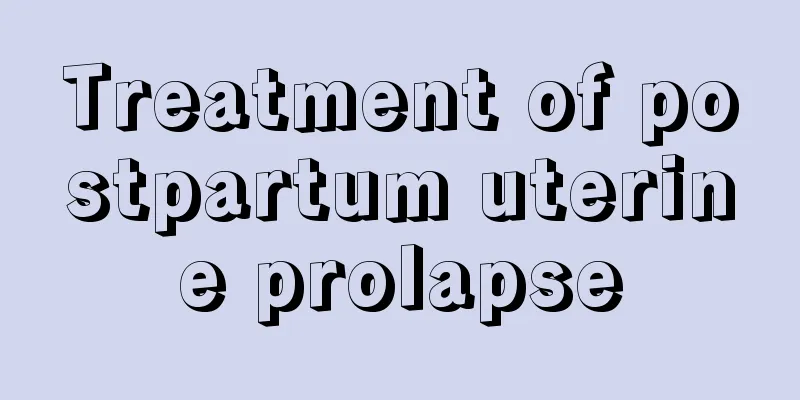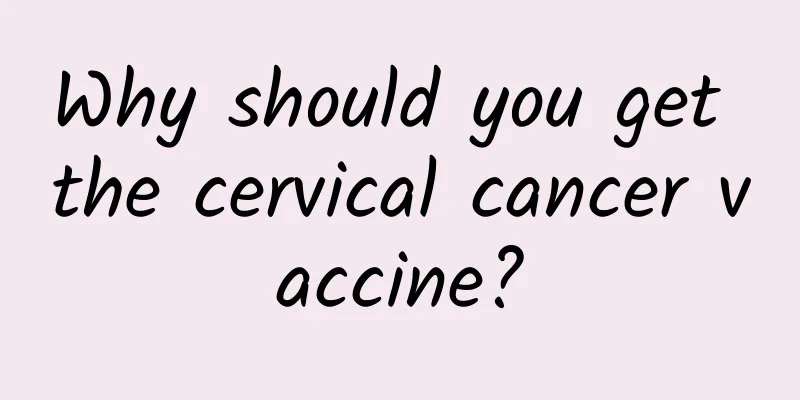Treatment of postpartum uterine prolapse

|
Many female friends will experience uterine prolapse after giving birth. Postpartum uterine prolapse is also a disease that affects the health of women's uterus. It will also affect the couple's life and cause women to suffer from psychological illness, so uterine prolapse should be treated in time. So, what are the treatments for postpartum uterine prolapse? Let us find out through the following. Uterine prolapse refers to the uterus descending from its normal position along the vagina to below the level of the ischial spines, or even protruding out of the vaginal opening. It is commonly known as "hanging eggplant bag" among the people. The uterus is located between the bladder and the rectum, and the uterine ligaments and pelvic floor muscle tissue maintain the normal position of the uterus. The main causes of uterine prolapse are damage to the pelvic floor muscles and vagina during childbirth, lack of care after childbirth, and inability to fully recover. Or uterine prolapse may be caused by postpartum constipation, long-term coughing, and continuous squatting. The following points should be noted in the prevention and treatment of uterine prolapse after childbirth: Do not get out of bed to work too early after childbirth, avoid excessive physical labor, especially do not do lifting work; keep the bowels open. If you have constipation, you can take 5 grams of Ma Ren Wan twice a day, or take honey in the morning and evening to moisten the intestines and promote bowel movements. It is absolutely forbidden to exert excessive force when defecation is difficult; pay attention to keeping warm and preventing colds and coughs. Those with chronic coughs should actively seek treatment; strengthen the contraction of the pelvic floor muscles and levator ani muscles, such as hip lifting exercises. If uterine prolapse has occurred, you should absolutely stay in bed and rest, and take more medicines that replenish qi, raise yang and benefit the blood. Treatment of uterine prolapse includes both non-surgical and surgical treatments. Non-surgical treatments include pessary, acupuncture, hydro-injection and traditional Chinese medicine. Pessary treatment of uterine prolapse is simple, convenient, economical and effective. You should get guidance from a doctor and not act on your own. For patients with severe uterine prolapse, those in good health, and those who are new to the disease, surgical treatment should be used. What are the treatments for postpartum uterine prolapse? I guess you already know it very well. You should pay attention to rest after delivery. During the confinement period, try to lie down to rest, refrain from sexual intercourse, avoid squatting for a long time, do more hip-lifting exercises, and it is best not to wear a belly band for a long time, which will make the situation worse. If the condition is serious, you should go to the hospital for examination and treatment in time. |
<<: What foods can make breasts bigger?
>>: What do irregular contractions feel like?
Recommend
Will eating tiramisu cake in the morning make you fat? What category does tiramisu belong to?
Tiramisu is an Italian dessert with a coffee wine...
Are breast cysts serious?
Modern women are under increasing pressure in wor...
What medicine is used for itchy labia
Many people actually don’t know what kind of medi...
Are breasts soft during early pregnancy?
As we all know, during pregnancy, women's hor...
IDC: Global smartphone shipments to reach 1.17 billion units in 2023, down 3.2% year-on-year
2023 is a special year. The advancement and appli...
19 weeks pregnant, stomach pain
All along, I actually didn't like children ve...
What causes back pain when lying down after childbirth?
Low back pain is an experience that many people h...
Microwave treatment of cervical erosion
The causes of cervical erosion are closely relate...
Glucose tolerance test time for pregnant women
After pregnancy, women are prone to gestational d...
What are the main contents of breast biopsy?
Breast disease has always been a very common and ...
【World Glaucoma Week】Beware of glaucoma "stealing" your vision
March 10th-16th is the 17th World Glaucoma Week. ...
What kind of product is milk dates? What kind of dates are used in milk dates?
Milk dates are made by removing the pits from red...
What is the use of Lingge invitation code? Why do people ask for Lingge APP invitation code?
Recently, after the Lingge APP developed by Wang ...
Best height for girls
What is the standard height for women? Female fri...
What should women eat to prevent aging?
Women are actually very worried about aging. Espe...









